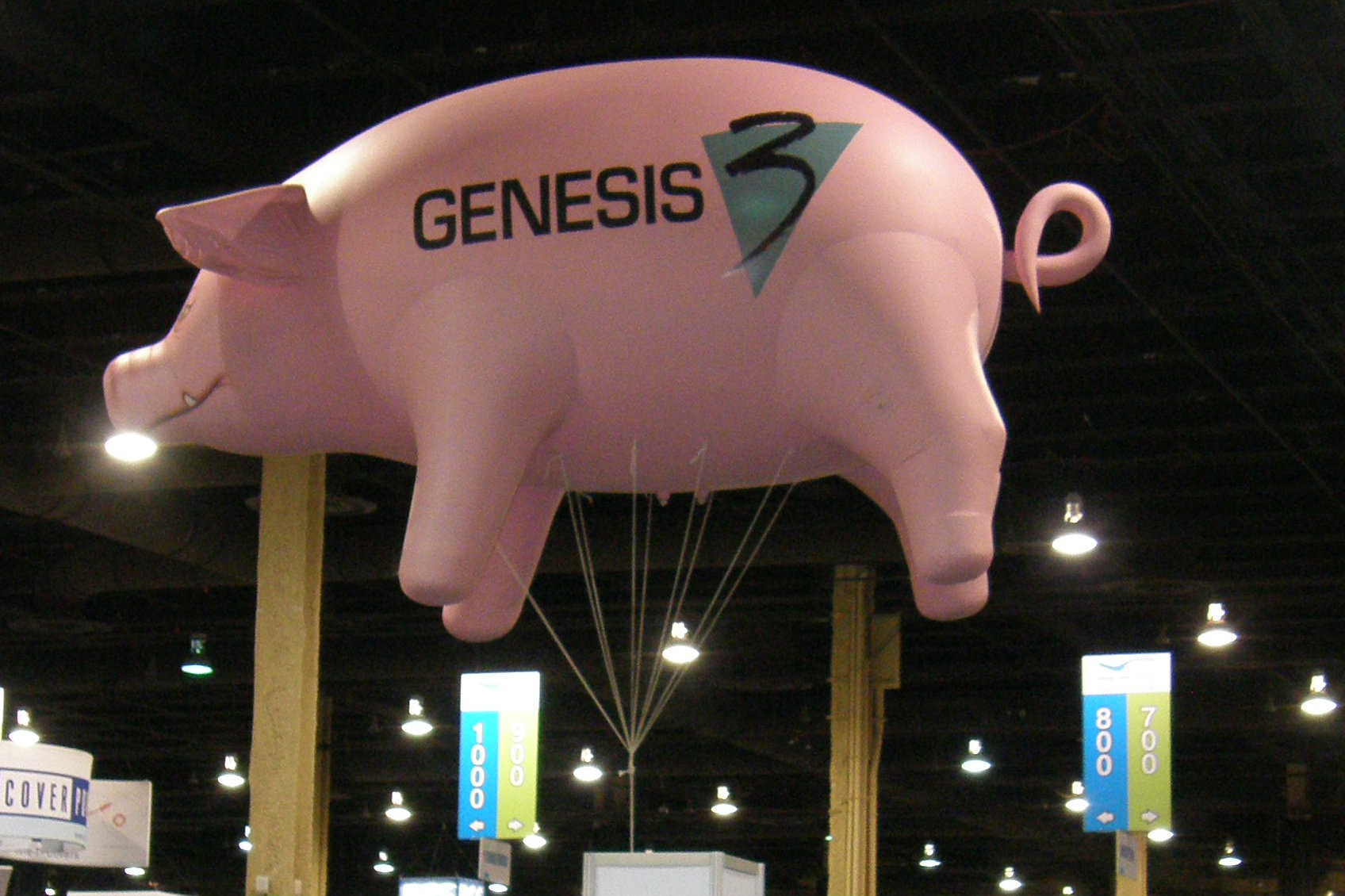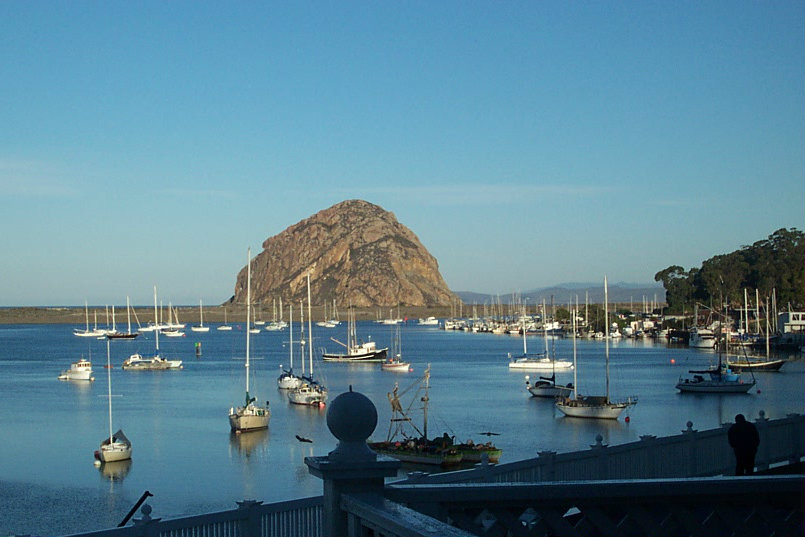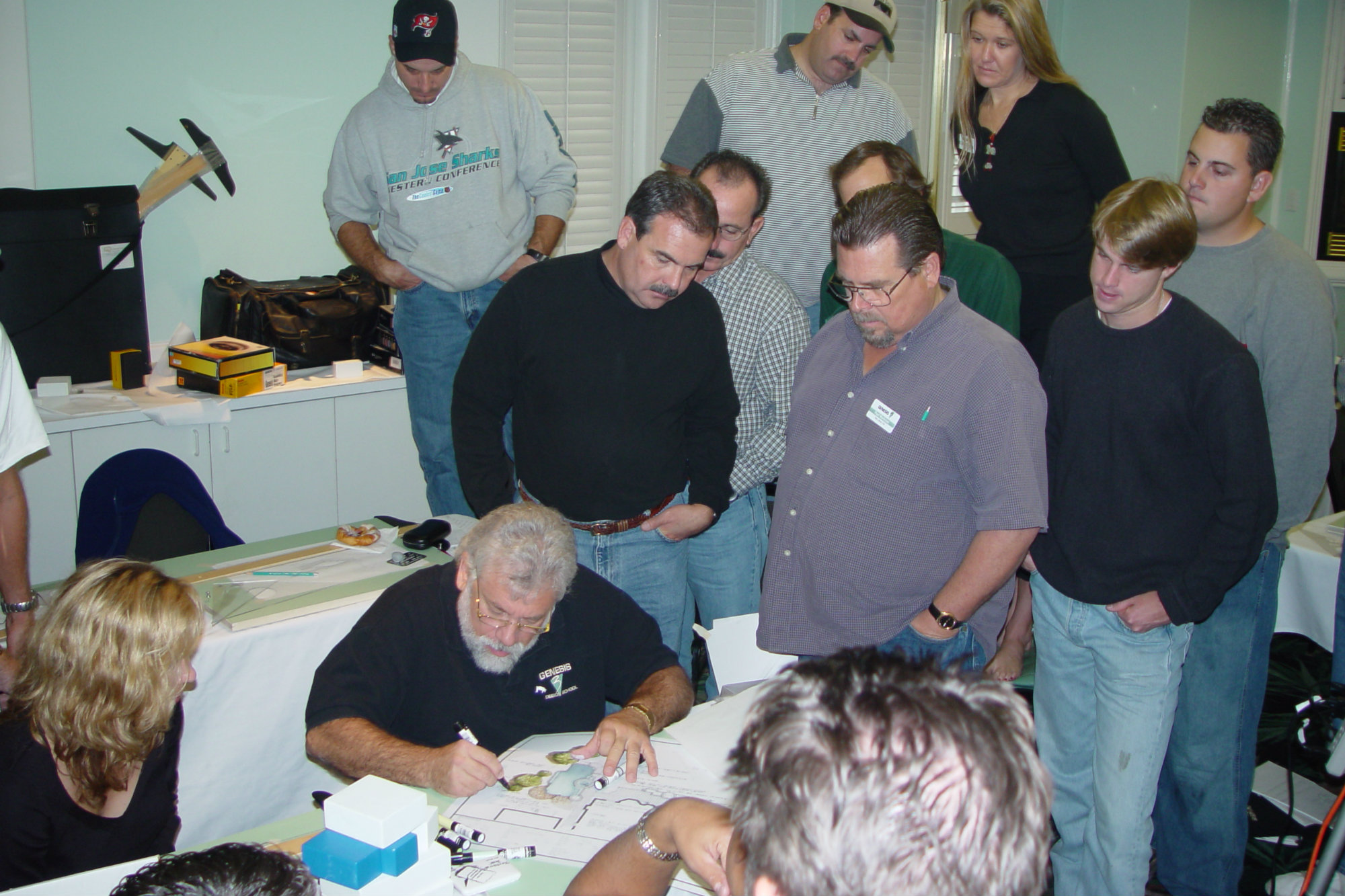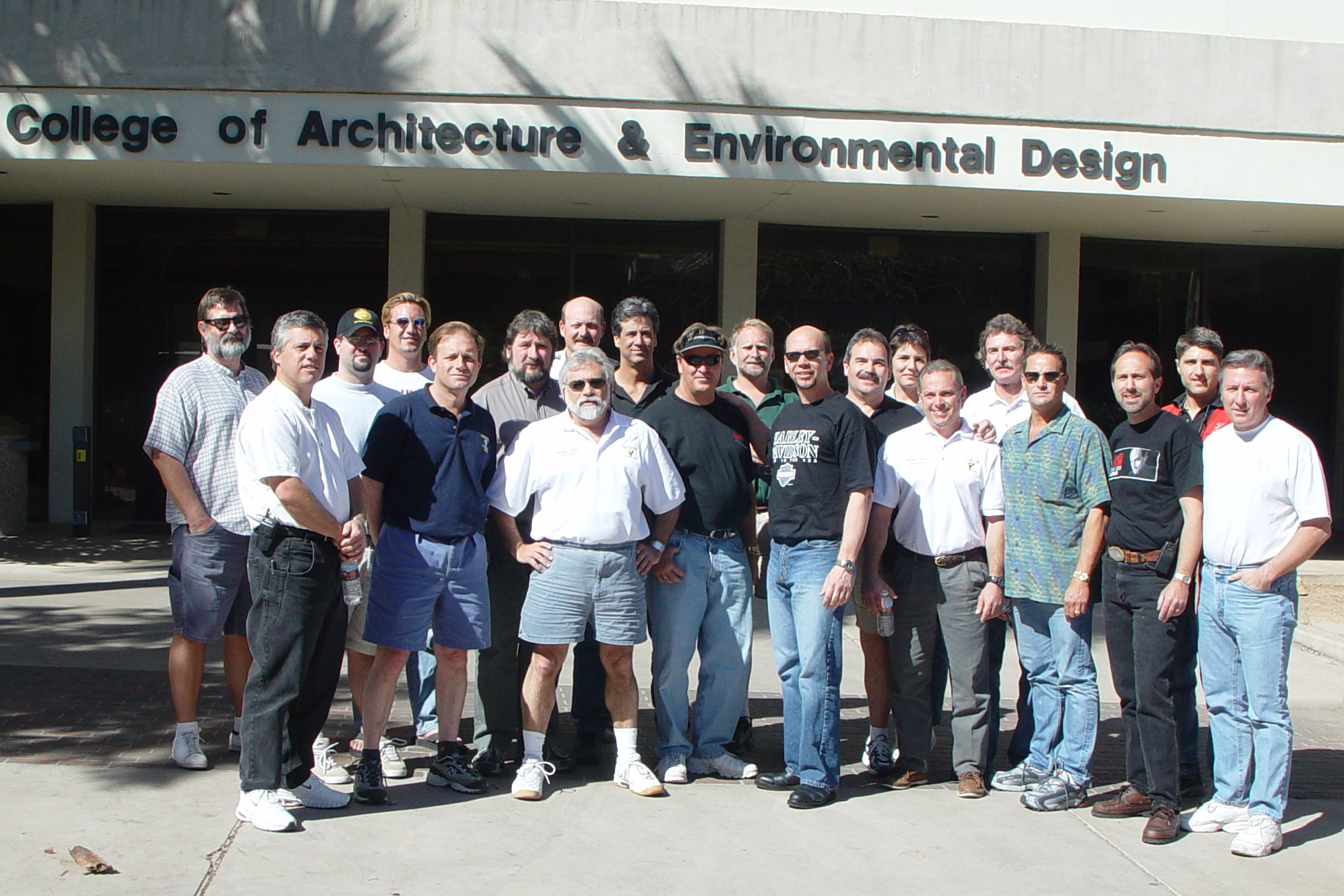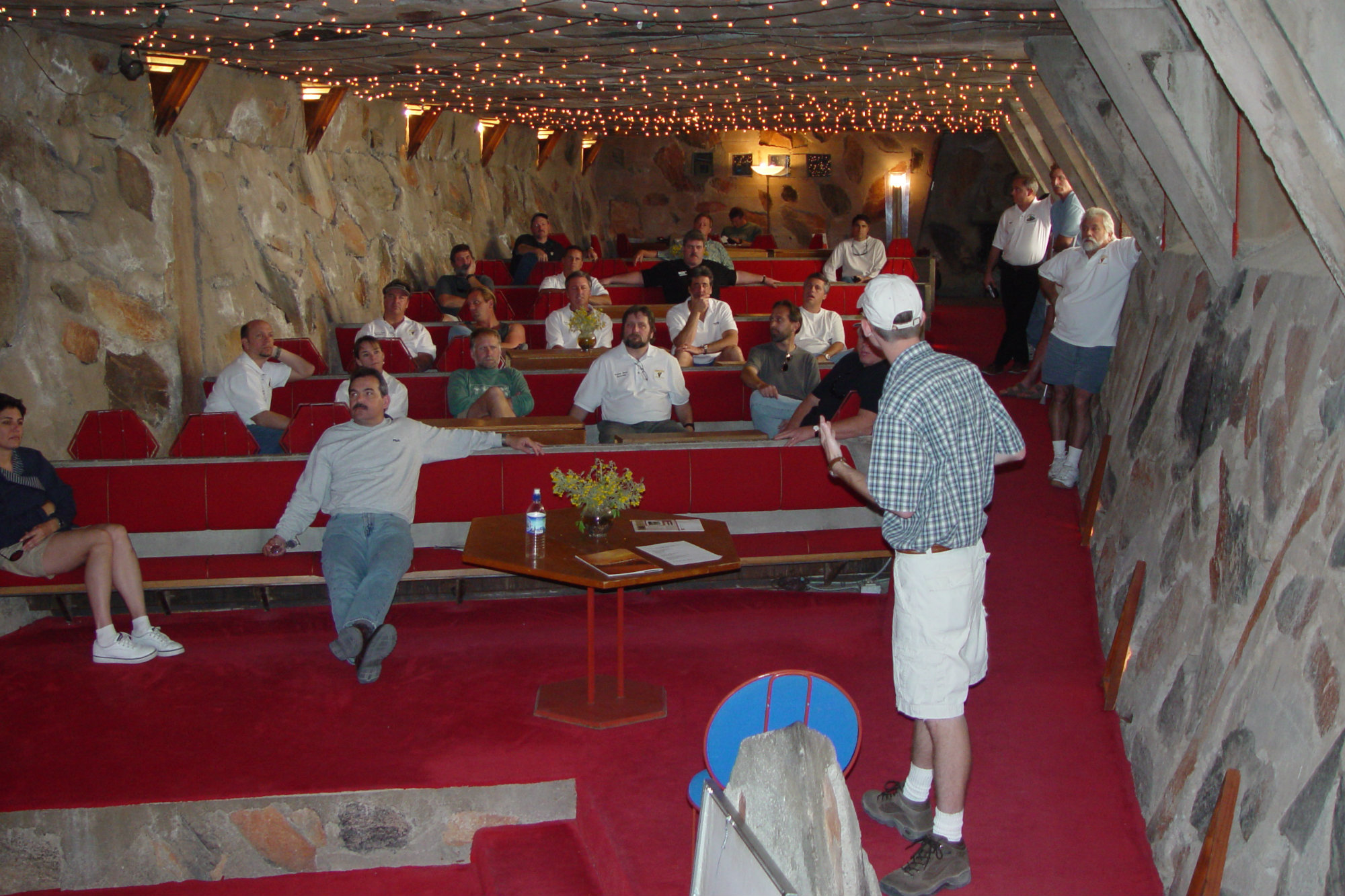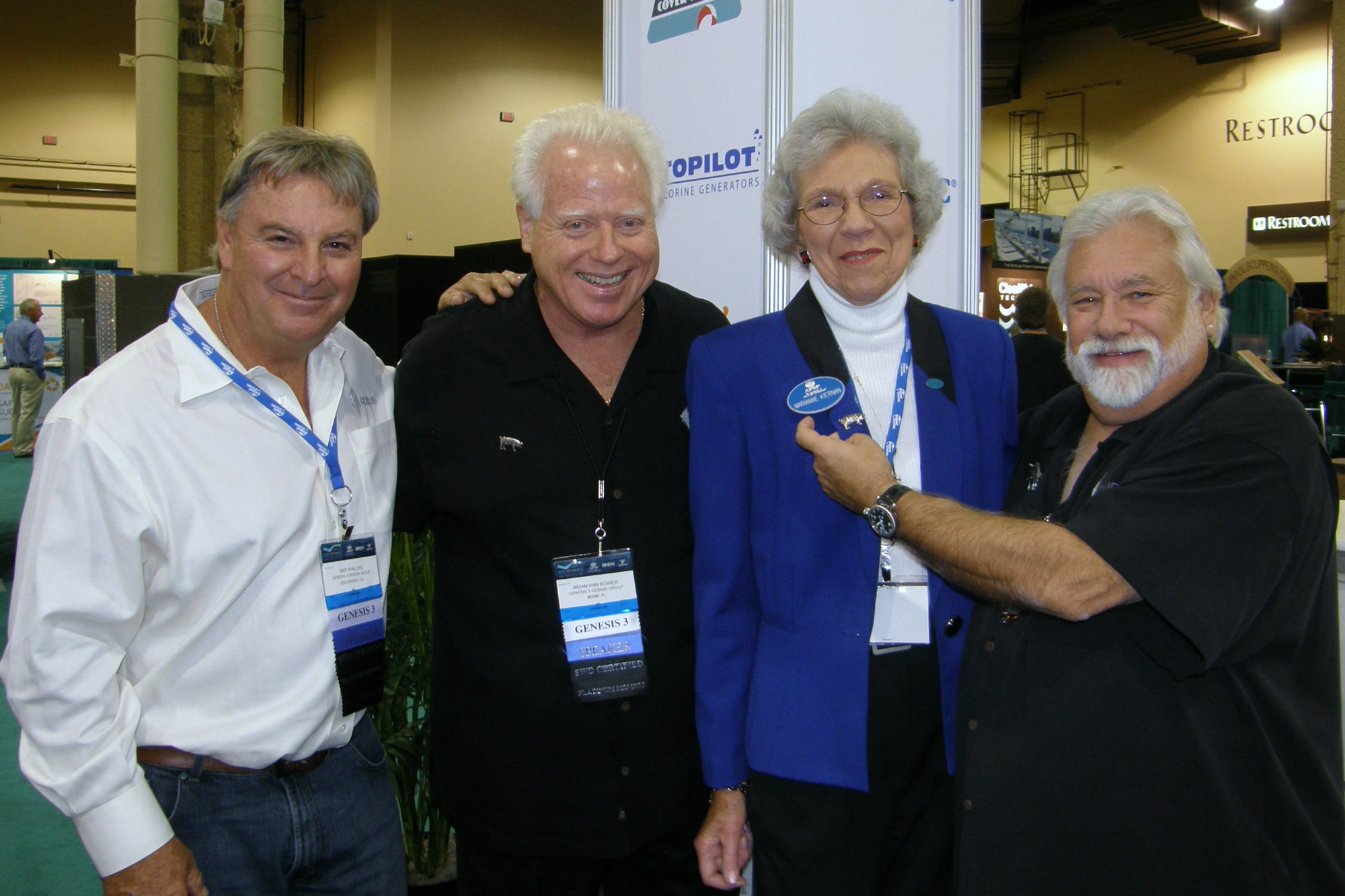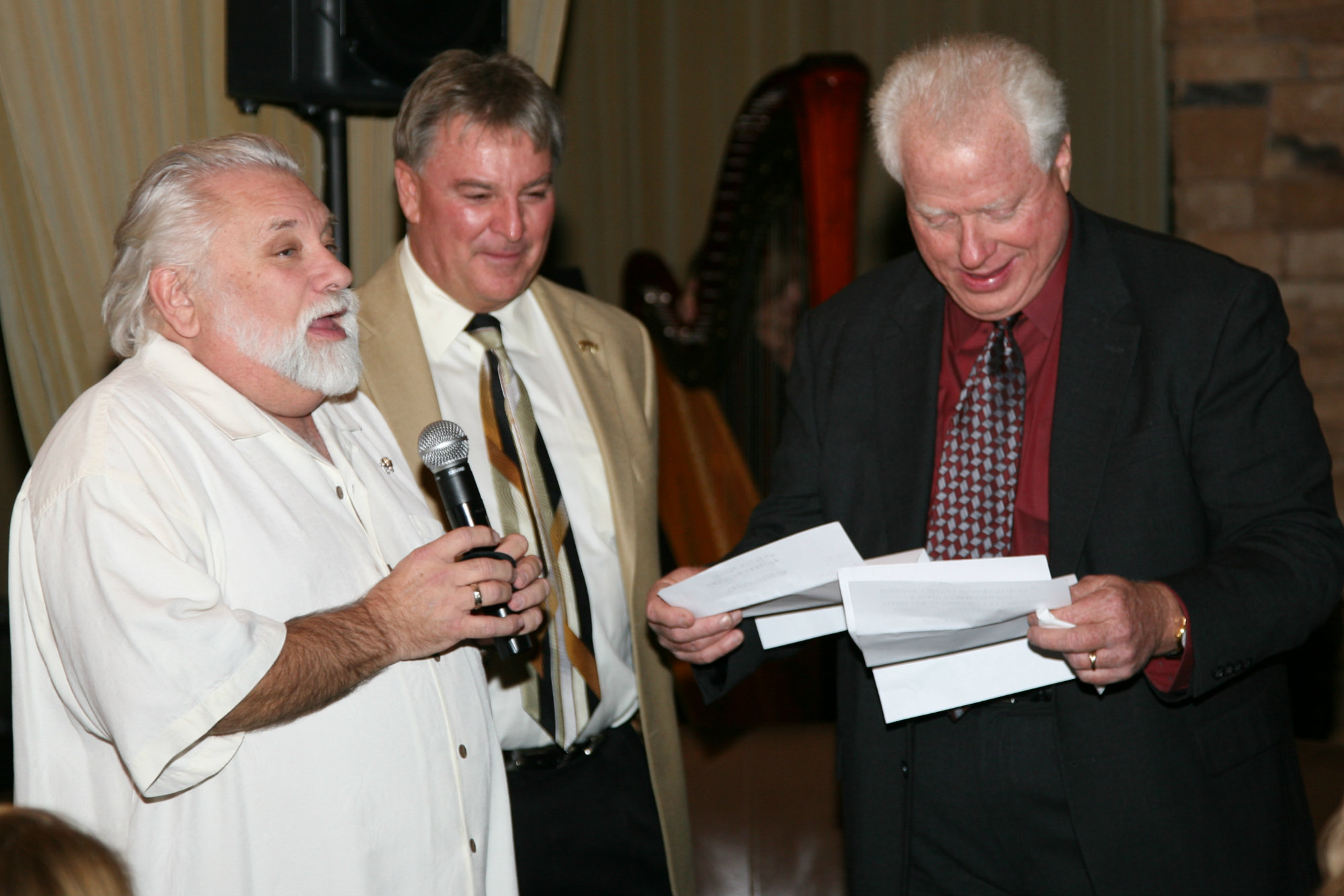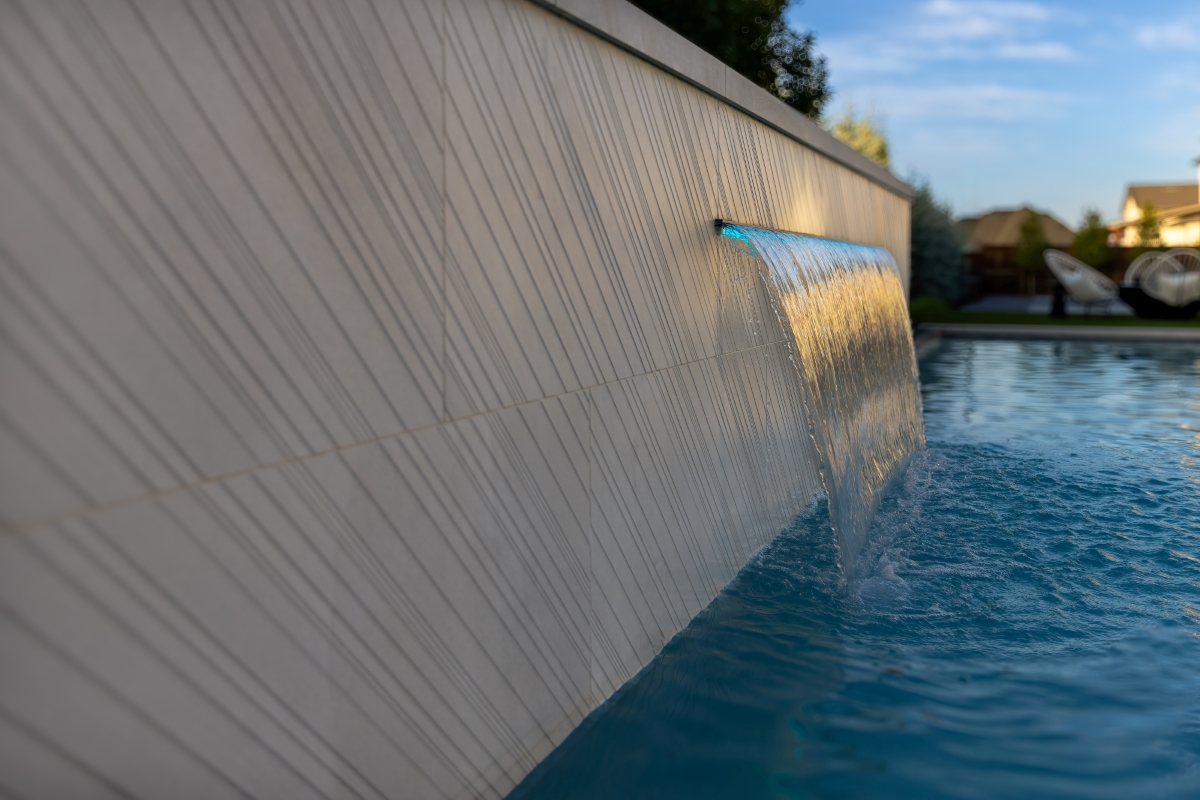Every renegade matures, as evidenced by the 20th anniversary of Genesis, the design/construction education group begun as something of a protest to the establishment of the time.
To mark the occasion, here is an accounting of how the organization began as the brainchild of three restless builders — Skip Phillips, Brian Van Bower and David Tisherman — and how its programs have evolved into a staple seen in virtually every industry convention and conference.
Chapter One:
Confrontation in the Bahamas
Photo courtesy Genesis/NSPF
It began with an argument about how to judge design awards.
“The informal inception of Genesis was actually in a bar over drinks in the Bahamas in 1997,” said Phillips.
He, Van Bower and Tisherman were part of the National Spa & Pool Institute design award committee. As Phillips and Van Bower tell, the three argued to tighten judging requirements. They believed too many awards were handed out, and that they would hold more meaning their way.
The trio were already accomplished builders — Phillips as one of two most responsible for bringing vanishing edges into our daily vernacular; Tisherman as an art-educated designer who tried things others wouldn’t; Van Bower, not only a talented builder/designer, but a charismatic personality with a gift for putting people at ease and injecting fun instantly.
But they could be pretty in-your-face. At one point during this meeting, they questioned whether portable spa installations deserve design awards. “That’s when we were called arrogant, elitist pigs,” Phillips says. “That’s why we ended up in the bar: We weren’t welcome anymore.”
From then on, they were known as the Three Pigs: Tisherman was Pig No. 1, Phillips Pig No. 2, and Van Bower Pig No. 3.
At first, Van Bower recalls, their plans were pretty informal. “We decided initially that we would band together in some type of loose organization dedicated to performing at a higher level.”
But another confrontation solidified their plans. Van Bower and Phillips attended an NSPI education meeting and advocated for an advanced education program, with instructors from outside fields such as engineers and architects. After being shot down, Phillips says, he told the group he’d begin his own school.
According to Phillips and Van Bower, an NSPI executive, who has long since left, dismissed the idea. “He said, ‘If you can get more than 20 people to go to a school like that, I’ll give you $100 per person.’” Phillips recalls. “I said, ‘You’re on. I’ll do it myself.’ Then Brian stood up and said, ‘No, he won’t do it himself. We’ll do it together.’”
The three received immediate encouragement and financial support from two manufacturing executives. First, Vance Gillette, vice president of business development with Zodiac Pool Systems, and one of the industry’s most popular speakers, approached them. “They were in a class of their own,” says Gillette, who has retired from the industry. “They looked at pool design at a different level … and they were providing more of a total experience of the pool. Even before they started Genesis, I said, ‘I’m in. I don’t even need to see it. ’”
Gillette became Pig No. 4.
Another was Bill Kent, CEO of Team Horner, who became Pig No. 5.
As they planned their first school, the three didn’t necessarily expect to hold more than one. They were just devising something they wanted to sit through, they say. They kept it to three days, because they didn’t expect the market to bear more.
“We thought if we get 20 people, that will be a lot,” Van Bower says.
When they announced the program, the three painted an enticing picture. They sought classes where seasoned veterans like themselves could learn. They wanted to bring those experts from outside the industry.
Tisherman largely oversaw the education program’s development, bringing in instructors whom he knew.
He also suggested the name Genesis, to mean new beginning, according to Phillips. The group initially went by the name Genesis 3: A Design Group.
Chapter Two:
Revelation in Morro Bay
The first design school from Genesis 3: A Design Group took place in September, 1998.
It was held at a resort in the sleepy Central California coastal town of Morro Bay.
Instructors included a pair of soils engineers, a structural engineer, a landscape architect and college instructor to discuss historic pools, ponds and waterfeatures to provide context and show how vital these elements were to design and life. And a key component of the program was a drawing course taught by Tisherman, who leveraged his art education.
PSN Contacted David Tisherman, who left in 2012, for this story. While he did not comment, his associate, Mark Holden, who taught from the first school until Tisherman’s departure, commented on his behalf. “I feel the difference between the original Genesis 3 and previous pool industry educational pursuits is that David brought highly trained individuals that were not pool-related to enhance the industry as a whole,” says the principal of Holdenwater in Fullerton, Calif. “At the time, this was a truly unique pursuit that many people said would not be successful. The failures of the past showed that the pool business had not matured or developed enough to teach itself unless it was on heater repair or service issues.”
The program didn’t just include education. They shared every meal and closed with a costumed theme party. “The best thing they did was make it fun,” Kent says.
It clearly touched a chord with several pool builders. Despite costing more than $3,000, the first class sold out in weeks. After the class, Phillips and Van Bower say, nearly every student reached out. “I think 18 or 20 of the 22 students called and said, ‘What are we doing next?’” Phillips says. “I said, ‘What’s this next? What are you talking about we?’ They said, ‘Well, you started it.’”
Added Van Bower: “If we made a list of all the exit survey quotes that we’ve gotten over the years, one of the most repeated sentences … was, ‘I found my tribe.’”
Chapter Three:
Growing Up
Nimbleness was on their side. With just the three decision makers, they could make changes fast.
In short order, they added a Level 2 school, held at a resort in the Florida Keys. A construction program followed, as did focused sessions such as a multi-day drawing class.
Over time, the group wanted to offer its program in more conventional industry venues, to more easily reach people. They started at the AQUA Show, then became part of the International Pool | Spa | Patio Expo after it acquired the AQUA event. Joining the convention circuit constituted one of the group’s watershed changes, Van Bower says.
They tried unique ways to distinguish themselves on the show floor. Some attempts worked, others proved impractical. A giant inflatable pig denoted the Genesis pavilion, where wine continues to be served. One time, the group tried to have a fire feature, which doesn’t work so well in a convention center. “We had to hire a guard [to watch it],” Van Bower says.
Another major change occurred in 2012, when Tisherman left following internal disputes. Phillips and Van Bower then changed the group’s name to Genesis.
The education program continued to take place at more venues, including regional conventions, buyers group conferences and distributor events. That doesn’t necessarily mean the group appeals to everyone, Phillips says.
With the maturing of the group came the retiring of the floating pig that marked the Genesis pavilion. “Over time, that arrogant pig stuff, we really needed to get some distance,” Phillips says. “It’s fun to talk and joke about it. But making it prominent in an educational system [wasn’t appropriate anymore]. When it got a hole and collapsed, nobody replaced it.” (They still use pins and other swag showing the pigs, though.)
Chapter Four:
The Kids Are Taking Over
Professionals suggest many ways in which Genesis impacted the industry.
Some individual builders and designers say the group changed their lives, by showing them new design possibilities and providing support and collaboration.
Others see significant changes to standard building practices largely resulting from the group. From its inception, Genesis advocated the combination of larger pipe with smaller pumps to maximize efficiency and safety. It encouraged builders to make vanishing edges with extra-tight tolerances, so smaller volume fueled by lower-powered pumps could provide coverage. They promoted soils reports on all properties that showed certain conditions, and cited American Shotcrete Association standards in prompting contractors to use concrete of at least 4,000 psi.
Phillips agrees. “Pools are built differently, look differently, and operate differently because of Genesis,” he says.
Kent sees an emotional component as well, saying the group helped raise the industry’s self image. “That has always been one of the issues with the pool industry — people don’t think of themselves as professionals or businesspeople,” he says. “When they walked out of Genesis programs … they had the confidence that they could design more sophisticated pools because they had resources behind them.”
But, as the remaining founders see it, a more important part of the legacy comes from the former students who now play lead roles in the group.
After Tisherman left, several of the instructors went with him, as they had come from his contacts. So Genesis appointed engineer and pool designer David Peterson, a former student, as director of education.
In one of his first moves, Peterson submitted the program to the International Association for Continuing Education and Training, which sets standards for instruction. He expanded the curriculum and employed an idea they had considered before, calling it Genesis University, whose most recent catalog lists more than 200 classes.
A couple years later, in 2015, the group merged with the National Swimming Pool Foundation. It was Van Bower’s and Phillips’ exit strategy. “Brian and I both knew that we could only get it up to a certain point, and we’re getting older,” Phillips said. “The people in our system, we owe them the ability for their participation in this structure to continue, whether we’re there or not.”
Before taking on Genesis, NSPF had hired Lauren Stack, who had served several years at the Association of Pool & Spa Professionals, to explore the possibility of creating a membership organization. Then a conversation about legacies took place between Van Bower and NSPF CEO Thomas Lachocki, Ph.D. “When the Genesis opportunity emerged, I said [to Stack], ‘Why don’t you wait on that? Let’s focus on how we can make the combination of these two great organizations something even better,’” Lachocki said.
Under the auspices of NSPF, Genesis enjoys more stability and has more structure, say professionals close to the group. Now it is governed by the NSPF board of directors, on which Phillips and Van Bower serve. In addition to Director of Operations Lisa Ryckeley, the group is largely directed by Stack, NSPF’s managing director, residential division.
“Having somebody wake up everyday and think about the big picture is huge,” Peterson says. “We’ve never had somebody managing things at that level. … It’s not a side job for the Two Pigs anymore. This is the real thing.”
Lachocki also bet that Stack would excel at a delicate process — joining cultures. While the two groups profess to sharing similar values, they gave off different tones: Countering Genesis’ casual, renegade, wine-drinking vibe is a much more structured NSPF.
Some have expressed a concern that as Genesis grows, it may become less personal. Stack already has ideas in the works to avoid that. For one thing, the group hasn’t made plans to offer Genesis courses online.
“I want to make sure that we’re not cheapening the true value of the connections and family building that we only can get in a face-to-face situation,” Stack says.
She also expects to institute a mentoring program what would help newcomers develop, and provide a way to vet those interested in joining its Society of Watershape Designers, for which members must adhere to certain ethics and character standards.
“We’re all about connections and family, and we want mentoring to be part of that team, so our SWD Masters are creating that next level of masters,” Stack says.
As all this takes place, Phillips and Van Bower have significantly reduced their Genesis workload. They serve on the board, and likely will do so until they term out after nine years. They also continue to teach.
“I hope as long as they’re alive, grasping for a glass of wine, that they’ll continue to do that,” Lachocki says. “If they can hold a glass, I want them on the team!”
But the next generation of instructors has been ushered in, with Peterson and other former students, including Paolo Benedetti, Mike Nantz, and Bill Drakeley, among others, joining the roster of experts from outside the industry.
“I’m incredibly proud — not of me, but of them,” Phillips says.

